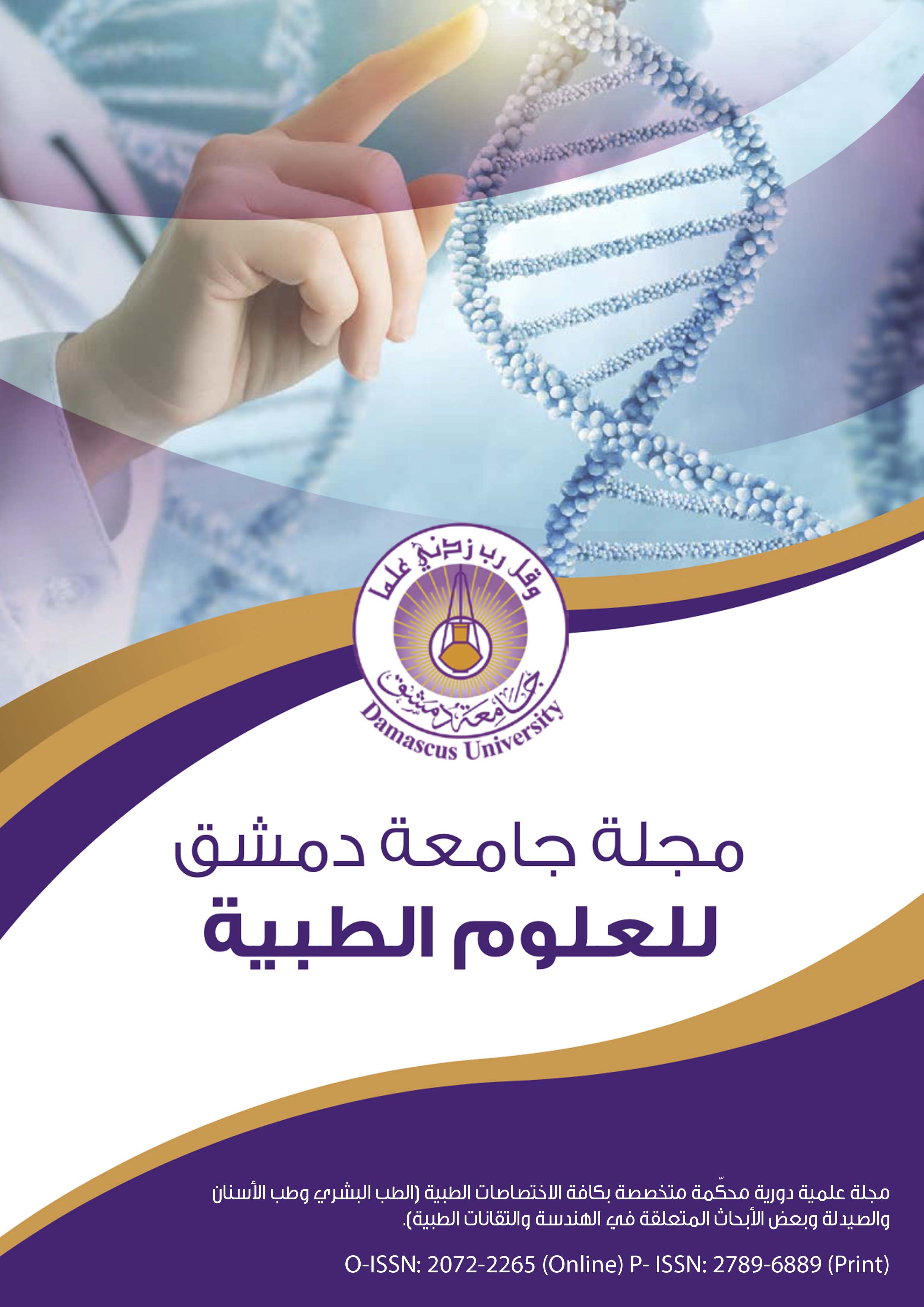التظاهرات Manifestation and Etiology of Refractory Esophageal Strictures in Children’s University Hospital in Damascus
Keywords:
Esophagus, Stricture, Refractory, ChildrenAbstract
Background and Objective: Pediatric esophageal strictures in general, and refractory strictures in particular are an important cause of morbidity and growth failure in children and could be a big challenge for clinicians, this study was conducted to assess the causes and characteristics of the strictures that may become refractory, and may not respond to the classic treatment in esophageal dilation.
Materials and Methods: The present study was carried out in the Pediatric Endoscopy Unit in Children’s University Hospital in Damascus, from the beginning of March 2020 to the end of December 2021.
The sample size included all children ranged from 1 to 13 years with esophageal strictures who required more than five esophageal dilation and still had significant dysphagia.
Results: The number of sample was 35 cases 57,14% of them were male.
The etiologies of the esophageal strictures were as follows: corrosive ingestion 57,14% (n = 20), peptic 37,14% (n =13), anastomotic (after esophageal atresia surgical repair) 5,71%(n = 2).
Upper esophageal third was the most common site of stricture (42,85%), and 71,42% of strictures were less than 3 cm in length.
Conclusions: Corrosive-induced strictures was the most common cause of refractory esophageal strictures and the upper esophageal third was the most common site of these strictures, these strictures may not respond to the esophageal dilation alone and may need other adjuvant treatments or surgery intervention.

